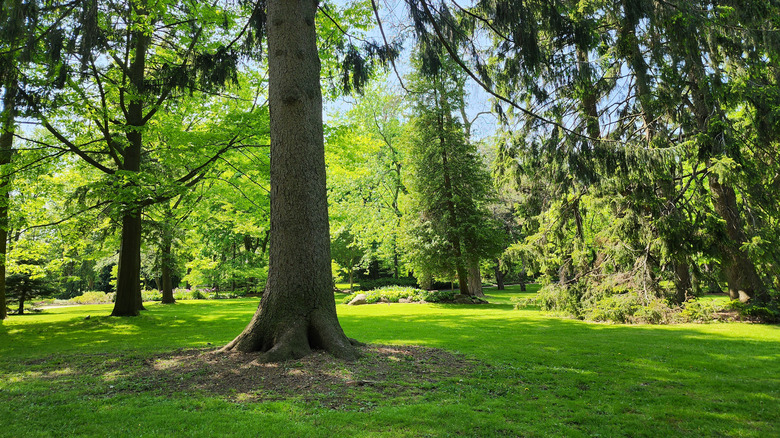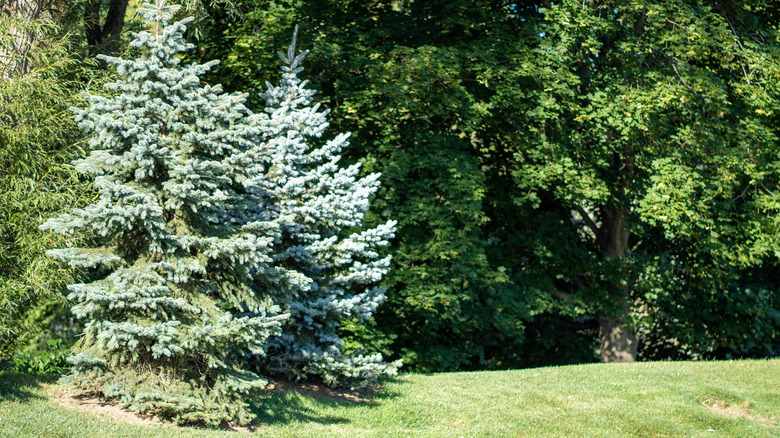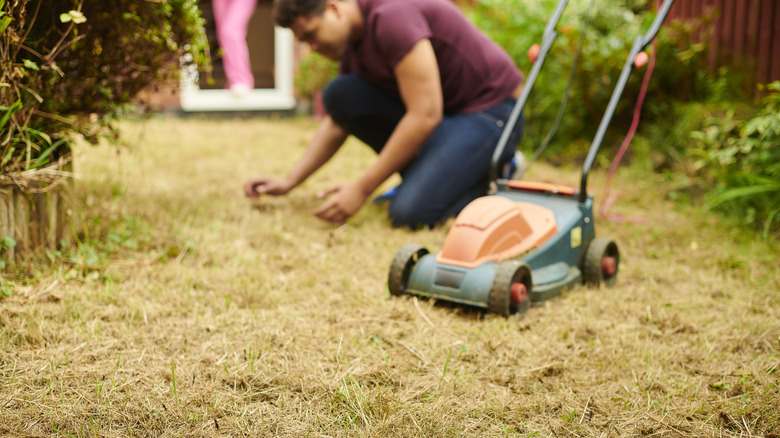Why You May Have Trouble Growing Grass Under Your Evergreen Trees
Strolling through your garden, you might find yourself puzzled by the stubborn patches of bare soil lurking under the evergreen trees. These trees, with their year-round lush foliage, add a constant vibrancy to your garden. Yet, beneath their boughs, you're faced with a lawn that seems to resist every attempt to cultivate a healthy bed of grass. This common gardening puzzle isn't just a matter of aesthetics; it's a horticultural challenge that many face. Evergreens, such as pines, spruces, and firs, are celebrated for maintaining their green splendor throughout all seasons. Their dense canopies, while providing welcome shade and visual appeal, cast a significant shadow over the ground below.
This shade plays a major role in affecting the growth of grass, as it limits the sunlight crucial for photosynthesis and healthy grass development. But the influence of these evergreens extends beyond just creating a shady environment. The interaction between evergreen trees and their surrounding ecosystem is complex. The unique conditions created by these trees, ranging from soil health and composition to moisture availability, set the stage for why grass struggles to grow in these areas.
Unraveling the mystery: why grass falters beneath evergreens
Let's peel back the layers of this gardening mystery and look beyond the shade cast by your evergreen trees. While the dense foliage is a primary factor, some other elements come into play. First up is soil acidity. The evergreen family tends to drop needles that accumulate over time. As these needles decompose, they release acids into the soil, gradually lowering its pH. Most grass varieties have a sweet spot for soil pH that leans slightly acidic to neutral. However, increasing acidity under evergreens creates an environment where grass struggles to absorb necessary nutrients effectively.
Another often-overlooked factor is the layer of fallen needles, commonly referred to as a needle blanket. This layer, while seemingly innocuous, forms a physical barrier on the soil surface. It can prevent grass seeds from establishing proper contact with the soil and hinder the penetration of sunlight and moisture. This barrier effect, combined with the altered soil chemistry and competitive water uptake, creates a trifecta of challenges for grass trying to grow under the sprawling evergreen branches. Now, consider the water dynamics. Evergreens are not just visually dominating; they're quite assertive when it comes to water consumption as well. Their extensive root systems are highly efficient at absorbing moisture from the soil. In this silent tug-of-war for water, grass often ends up on the losing side, especially during drier periods. The resulting moisture deficit makes it challenging for grass to maintain its health and vigor.
Turning the tide: strategies for growing grass under evergreens
So, you're facing the challenge of growing grass under your majestic evergreens and wondering how to turn this seemingly impossible task into a success story. Let's explore some effective strategies that can help you achieve that lush green lawn, even in these tricky areas. The journey begins with the soil. Testing the soil's pH is an important first step. As mentioned, evergreens often make the soil acidic, but by applying lime, you can gradually shift the pH towards a more neutral level, ideally between 5.5 and 6.5. This adjustment doesn't happen overnight, so patience and regular monitoring are key.
Now, let's talk about the grass itself. The secret lies in choosing the right type. Not all grasses are created equal, especially when it comes to thriving in shade. Fine fescues, including varieties like red and sheep, are known for their shade tolerance. These are your go-to choices if the soil under your evergreens is on the drier side. On the other hand, if your soil stays moist, rough bluegrass, particularly the Sabre variety, could be a better fit. It thrives in shaded, moist conditions but doesn't do well in constantly wet or dry soils. Apart from adjusting soil pH and choosing the right grass type, one other important factor is pruning. Prune the lower branches of your evergreens to let in more light.


